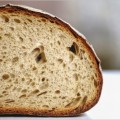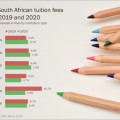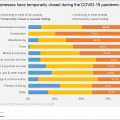
COVID-19: Weekly deflation of essential products continues
The prices of essential products decreased by 0,1% between the weeks ending 16 and 23 April after decreasing by 0,2% the previous week. The essential products consumer price index (EP–CPI) has increased by 0,2% since weekly data was first collected at the beginning of the lockdown in the week ending 2 April. This article covers read more »
Statistics South Africa to use telephonic data collection for Quarterly Labour Force Survey (Q2) 2020
Media Release 28 April 2020 Statistics South Africa to use telephonic data collection for Quarterly Labour Force Survey (Q2) 2020 The lockdown and progression of the pandemic resulted in the discontinuation of face-to-face data collection on 19 March 2020. Further to this, Statistics South Africa’s (Stats SA) Executive Committee took a decision to suspend read more »

COVID-19: Stats SA speeds up the monitoring of consumer prices
When the COVID-19 lockdown went into effect on 27 March, the range of products available to households for purchase was restricted to a set of defined essential goods and services. Since the beginning of the lockdown, Stats SA has been measuring price changes for those essential goods that appear in the Consumer Price Index (CPI) read more »

Inflation dips to 4,1%
Annual CPI inflation nudged lower to 4,1% in March from February’s reading of 4,6%. There were two key features of the CPI in March: the incorporation of fee data from educational institutions (including crèches) and the effect of the latest increases in excise tariffs. Tuition fees are surveyed once a year in March. On average, read more »
COVID-19: Four in ten businesses feel that they cannot continue to operate
Media release 21 April 2020 COVID-19: Four in ten businesses feel that they cannot continue to operate The results of a rapid response survey conducted by Stats SA during the lockdown was released today. Businesses were asked how the current crisis affected their operations in the two-week period from 30 March to 13 April 2020. read more »

COVID-19: Four in ten businesses feel that they cannot continue to operate
A rapid response survey, conducted by Stats SA during the lockdown, asked businesses how the current crisis is affecting their operations in the two-week period from 30 March to 13 April 2020. This is what they told us. A total of 707 businesses in the formal sector responded to the survey, outlining the pandemic’s impact read more »
Stats SA launches online survey to gauge the impact of the COVID-19 pandemic
Statistics South Africa (Stats SA) is appealing to the public to participate in an online survey it launched recently to gauge the impact of the COVID-19 pandemic. “Accurate, real-time statistics are of utmost importance in times of crisis,” said Statistician-General Risenga Maluleke. “These surveys will be used to see how COVID-19 has impacted the population, read more »
COVID-19 lockdown impacts publication of economic statistics
Media release 17 April 2020 COVID-19 lockdown impacts publication of economic statistics Statistics South Africa recently issued a media statement on the impact of the lockdown on data collection processes and scheduled web statistical releases. In light of the extension of the lockdown, we felt it important to keep the public apprised of the continuing read more »
Impact of COVID-19 on Economic Statistics in Statistics South Africa
Background The personal, social and economic impact of COVID-19 is unlike anything experienced by the world in the past 75 years. Stats SA is aware of the need for timely data to understand these impacts, but is equally constrained by the restrictions put in place to manage the spread of the coronavirus. The task of read more »
Mbalo Brief – April 2020
COVID-19, Coronavirus, social distancing or lockdown have become the talk of town. This is a period that will definitely find its way into the world’s history books. Many businesses were forced to put their operations on hold, workers, pupils and students have been forced to stay at home and the South African National Defense Force read more »

